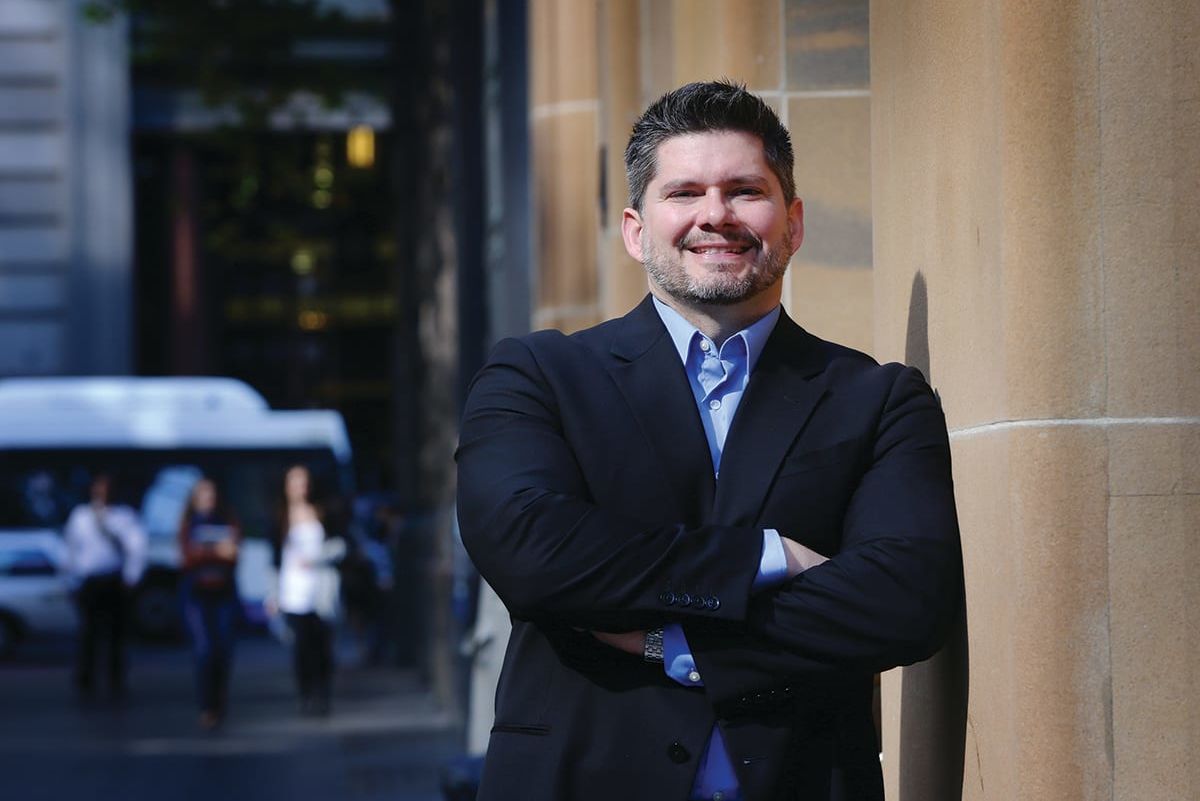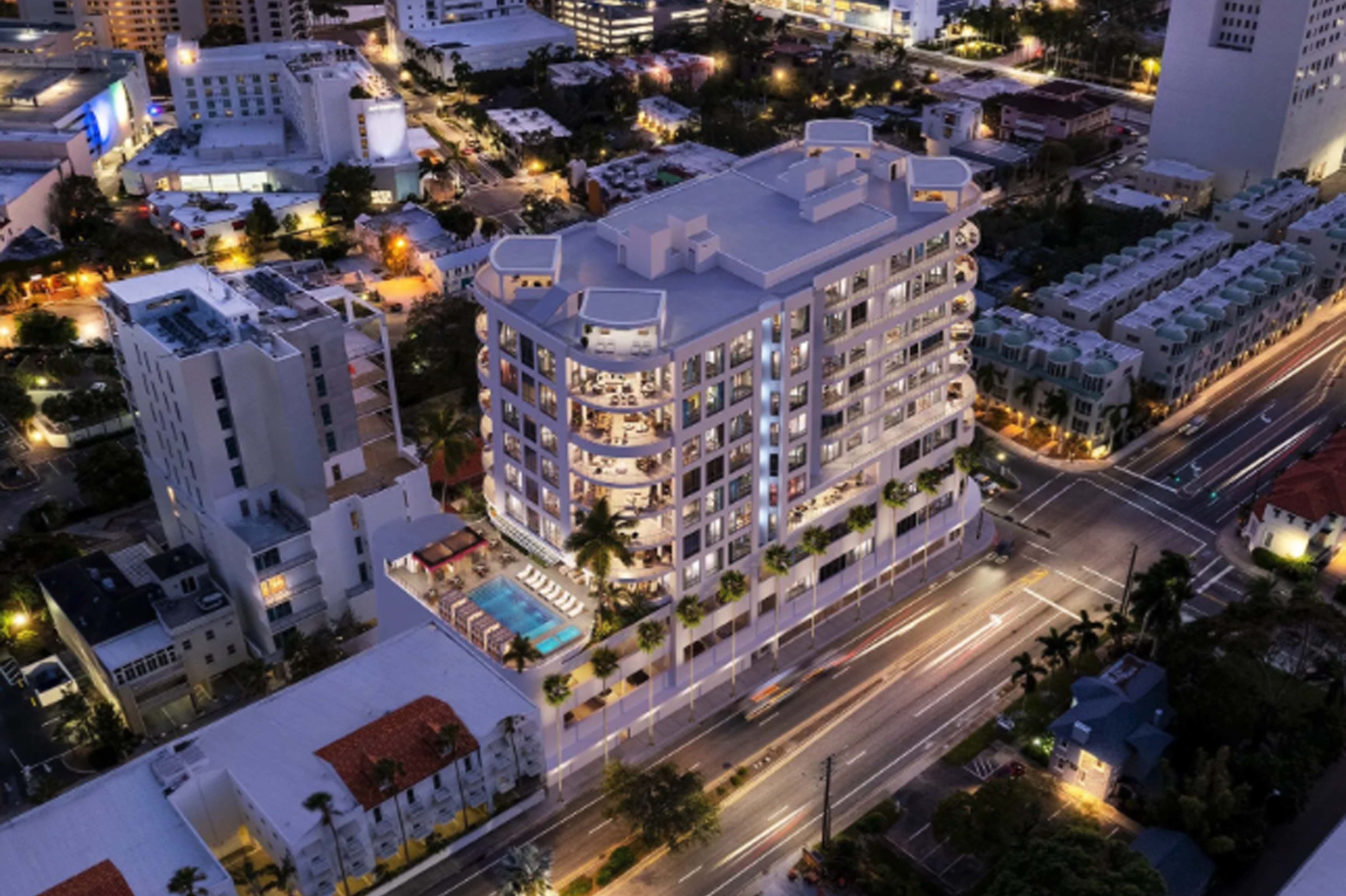A New Two-Tower Development Will Bring Penthouses—but Also Attainable Housing—to Sarasota’s North Trail

Image: Courtesy Photo
At this point, anything that's single-story in downtown Sarasota is on the endangered list. Case in point: a developer based in the Midwest is poised to build on a 1.7-acre site at the gateway to downtown Sarasota between Fourth and Fifth Streets, where a long-underused alley and a patchwork of parcels (one of them the beloved Toasted Mango's old location) are being reshaped into a new mixed use project.
The project, called Saravela, is being led by GSP Development, an Illinois-based firm making its Sarasota debut after building in Fort Myers and Clearwater. The plan calls for two residential towers—one rising to 18 stories, the other stepping down to 11—over a shared podium that includes structured parking; 11,402 square feet of ground-floor retail; and a range of high-end and family-friendly amenities, rare for a project like this. The North Tamiami Trail site is located within a few blocks of Sarasota’s Bay Park, Rosemary District and a growing collection of new residential developments.
Before embarking on the Saravela project, GSP Development pursued a plan to build a luxury hotel on Siesta Key. The proposed 170-room, five-star hotel was to feature ocean views, a rooftop pool and additional public parking. However, the project faced significant legal challenges. In 2023, both a state administrative law judge and a circuit court judge ruled that Sarasota County's approval of the hotel violated the county's Comprehensive Plan, which restricts increases in density and intensity on the barrier islands. These rulings effectively halted the project, leading to a settlement in which the county agreed to reimburse the plaintiff, Lourdes Ramirez, $170,000 in attorney fees.

Image: Courtesy Photo
Saravela will include 281 residential units, with 40 designated as attainable housing—that is, units that are affordable to households earning from 60 percent to 120 percent of the area median income (AMI) in the North Port-Sarasota-Bradenton metropolitan statistical area (MSA). The city requires that 15 percent of a project's units be designated as attainable, and remain so for at least 30 years, in order to qualify for a density bonus, which permits developers to build up to four times the base density in designated downtown zones. The units must be distributed across three income tiers: one-third affordable to households earning 80 percent or less of the AMI; one-third for those earning between 81 percent and 100 percent of the AMI; and one-third for those earning between 101 percent and 120 percent of the AMI. The 2024 AMI in the North Port-Sarasota-Bradenton MSA for a one-person household is $97,000; accordingly, monthly rents for attainable units are capped at approximately $1,620 for individuals at 80 percent AMI, $2,025 at 100 percent of AMI, and $2,430 at 120 percent AMI, including utilities.
“I’ve been lucky in life,” GSP Development president Larry Debb says of his decision to include 40 attainable units instead of 29, the minimum required. “It was a small way to give back.”
Debb, who owns a home on Lido Key, says Sarasota had long been on his radar. “I like the West Coast [of Florida],” he says. “This is our first project here, but we’ve done a 15-story [building] in Clearwater and some things in Fort Myers.”
In addition to offering below-market rentals, the development includes 11 two-story townhomes with private street-level entrances and indoor parking. “You’ll park inside and walk right into the back door of your unit,” he says.
Designed by Tampa-based Kimmich Smith Architecture, Saravela will feature high ceilings—12 feet in most units—and a mix of residential formats. Pricing for the market-rate units is expected to range from less than $1 million to slightly more than $3 million, with a penthouse collection aimed at full-time residents. That tier will include its own private lobby and elevator, as well as limited rental flexibility, with leases allowed only in 3-6 month increments. “Most of the competition starts at $3 million and goes to $15 million,” Debb says. “This will be available to a wider marketplace.”
Still, luxury plays a role. Residents of the penthouse tower will have access to a private pool, plunge pool and jacuzzi, plus indoor spa amenities, an exercise room, and a private dining space. The adjacent tower offers its own amenities: a pool, putting green, bocce ball court, a kids’ club with a bowling alley and game room, and even an “à la carte” baby-sitting service for residents heading out for the evening. A fifth-floor outdoor deck—situated atop the parking garage—will feature quiet garden “book nooks” and a splash pad.
Both towers will share access to a golf simulator, as well as weekly car wash and oil change services for residents. A 3,000-square-foot green space will anchor the southwest corner of the development, alongside seven publicly accessible parking spots. GSP says it has already received interest in the commercial spaces and expects to announce tenants within the next 60 days.

Image: Courtesy Photo
While the project’s scale and location prompted scrutiny from Sarasota officials at first, it cleared a major hurdle on May 19, when city commissioners voted in favor of a request to vacate and realign a portion of the Fourth Way alley. The reroute will redirect alley traffic to Fourth Street, allowing for wider sidewalks, added green space, and improved pedestrian safety in an area that currently lacks consistent sidewalk infrastructure and lighting. The developer also committed to relocating underground utilities at its own expense and adding a mix of native canopy trees and palms along the perimeter.
Debb says the site layout was adjusted to reduce height along the eastern edge of the property, which falls partially outside the city’s downtown bayfront (DTB) zoning district. “It’s cut in half,” he says of the zoning. “That’s why we step it down to 11 stories.”

Image: Courtesy Photo
The project was designed to thread into the city’s broader public realm goals. A tax overlay connects the site to the Bay Park Improvement District, with the expected value of the vacated alley now included in the district’s taxable land base. City documents estimate that the improvements will generate $800,000 to $900,000 in revenue over the life of the district.
With permitting now underway, construction on Saravela could begin in the coming months, with a projected build-out timeline of 24 months. “All the city meetings are done,” Debb says. “The next step is pulling permits and gearing up with marketing.”
Debb insists that Saravela offers more than height. “It’ll be higher quality,” he says. “We’re not just building towers. We’re creating something that works for a broader community.”



